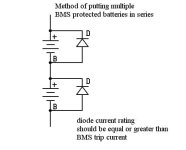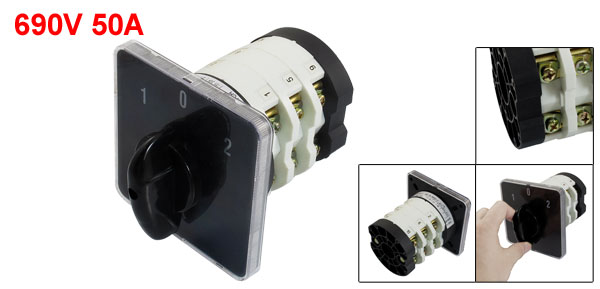fechter, would the diodes be necessary in a series/parallel arrangement? It seems to me that the parallel modules would safeguard the others...
eisaiasjr, we may be attempting the same thing... do you intend on putting five of those modules in parallel, in series with another bank of five in parallel? Maybe we can work together on this? I don't want to hijack your thread... let me know if you'd like me to frock off

otherwise, maybe I can share what I've found.
I've got one of the packs in my hands and I'm experiencing what others have... that they're great packs and are close to what is advertised in the auction. I've heard there may be inconsistencies with BMS mounting and/or type of connector... will you please let me know if you come across any issues?
If you're wanting to use all ten modules, configured for 72V, have you sourced a charger yet? I had a ton of difficulty finding inexpensive 72V chargers at the power level that we need. To accommodate a much easier to deal with voltage of 36V, I am considering using a relay and two diodes to change the configuration of the pack, for charging only. The relay+diodes will reconfigure the pack from the original 5+5, to putting all ten of the "alarmhookup modules" parallel. Naturally, it seems that the doubled charging current requirement has now made things difficult again

A possible solution might be to use a "Turnigy Reaktor" or a "Charsoon Antimatter" Li-ion balancer (120USD) and feed it with a cheap switching power supply that I've yet to source.
In case it's useful to you, here is what I came up for voltages/currents according to the datasheet, for the final configuration of 72V and ten modules.
Neither my target values for charging current (design), nor my mathematics has been independently verified.
My definitions:
Cell = A single 18650
Module = The 10S2P, 36V @ 4.4AH with BMS from Ebay seller "alarmhookup".
Wholebatt = The entire battery, configured as 72V (20S) 20AH (10P) for a stored energy of 1.44kWH (1440 watt/hours).
I've intentionally rounded the 4.4AH to 4.0AH.
Normal charging currents, extrapolated from datasheet:
Cell I_charge_normal: 0.5C (1.075A)
Module I_charge_normal: 2.15A
Wholebatt I_charge_normal: 10.75A
<----- This is a good starting value for what the charger should supply
Maximum charging currents, extrapolated from datasheet:
Cell I_charge_max: 1C (2.15A)
Module I_charge_max: 4.3A
Wholebatt I_charge_max: 21.5A
If I can't find a cheap 72V 10A charger, [EDIT: Why not three of
THESE in parallel?!] the schematic shows the circuit I plan to use to re-configure the pack to 36V. I sourced some really good diodes... they'll hardly affect (0.6V or less) the final charge voltage. The schematic is lacking the circuit to detect the presence of the charger, I haven't "designed" it yet but it will be simple. Probably just a single BJT transistor across the front-end. When the charger is applied, 36V will appear, turning on the transistor, which turns on the contactor coil, opening the contacts. (Only the contactor's N.C./Normally Closed contacts will be used.).



